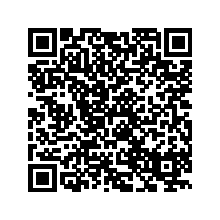Discovery at Carlson·08 Real-Time Scholarship

Real-Time Scholarship
Tuesday, November 17, 2020
It’s been a particularly busy year for labor economist Aaron Sojourner. An associate professor in the Carlson School’s Department of Work and Organizations, Sojourner has adjusted his research to respond in real time to critical issues facing the community and the nation.
“I definitely value being a scholar and doing scholarly work,” Sojourner says. “Also, the economy and the labor market--and human flourishing, which is what labor economists' study to some extent—are important to people beyond the scholarly community.” It’s crucial, he adds, “to bring social science evidence to public discussions when the community is grappling with decisions, wrestling with opportunities or challenges. We should do this with all the best tools and knowledge available.”
In recent months, Sojourner has published research on the challenges of childcare access issues during the pandemic. He’s also co-authored a report on COVID-19 screening practices in the workplace and presented a study on which employees are more likely to advocate for practices that can protect them from the novel coronavirus and other workplace health and safety hazards.
The pandemic-related research that’s garnered Sojourner the most attention is his work forecasting jobless claims. In early March, “I started noticing that news articles coming out from around the country,” he recalls. “In many states, officials were holding press conferences to say that newly laid-off workers were swamping their offices with unemployment insurance applications. They were reporting these big spikes all of a sudden. I wanted to understand what was happening in a systematic way.”
Instead of waiting for official government reports, Sojourner turned to a different tool—Google Trends. “I figured that the way people were going to look to find unemployment insurance is through a web search,” he says. The search data Sojourner dug into suggested unprecedentedly massive spikes in unemployment claims in nearly every state.
Sojourner tweeted out his findings, which caught the attention of Paul Goldsmith-Pinkham, an associate professor of finance at the Yale University School of Management. Based on their analysis of news reports and Google data, they estimated that nationwide, there’d be 3.4 million new claims for the week ending March 21. Several Wall Street firms had estimated 800,000 to 900,000; Goldman Sachs predicted 2.25 million. On March 26, the official report came out: 3.3 million claims. They continued to forecast claims each week prior to official data releases using search interest as a proxy. Because the country was experiencing such rapid change and the analysis was so timely, the New York Times, Washington Post, Vox, and many other outlets covered the work.
This might not be the kind of research many might associate with the term scholarship. “But it’s something that was important for our community leaders and political leaders to understand in a timely way so that they can make good decisions about allocating resources and aid if it’s needed,” Sojourner says. The U.S. Senate passed the CARES Act on March 25, the day before the official report of 3.3 million new claims came out. “By signaling the magnitude of the layoff wave happening earlier in the week, We made a small contribution to informing that debate,” Sojourner says, by helping Congress recognize the magnitude of the potential disaster confronting working people.
In addition to writing articles and papers, Sojourner has been interviewed numerous times on a variety of media outlets regarding the pandemic’s effect on the labor market. He’s also active on Twitter. But Sojourner’s work as a kind of public intellectual isn’t about policy advocacy per se. Instead, he seeks to uncover information that can help shape public understanding of complex social issues.
Sojourner says that public interaction also helps inform his scholarship. “I learn how to better understand the questions people are struggling to understand,” he notes. “It helps me shape my own research agenda and keep my research relevant to the concerns of the community.”

实时的学术研究
2020年11月17日
2020年,劳动经济学家、卡尔森学院Department of Work and Organizations的副教授Aaron Sojourner非常忙碌。2020年,他调整了研究方法,以期对社区和国家面临的重要问题作出实时反应。
Sojourner表示:“我非常珍惜我的学者身份和学术工作。对于学者以外的人群而言,经济、劳动力市场、以及劳动经济学也研究的人类繁荣问题,都是很重要的。”他进一步表示,“当社会面临决策困境、在机会和挑战之间挣扎时,公众需要社会科学证据。我们应当使用最好的工具和知识来完成这个任务。”
最近的几个月,Sojourner发表了对疫情期间儿童保育问题的研究结果,合著了一篇关于工作场所新冠疫情筛查的报告,并执行了一项研究以甄别更愿意支持在工作场所采取措施防控新冠病毒及其他职业安全与健康问题的员工。
在疫情相关研究中,占用Sojourner最多精力的是预测失业人数的工作。他回忆到,2020年3月初,“我注意到全国各地涌现的新闻报道。很多州的政府官员召开新闻发布会,表示新近失业、申领失业保险的人员挤满了他们的办公室。失业人员剧增出人意料。我想系统性研究到底发生了什么事。”
Sojourner没有坐等政府的官方报告,而是使用了另一个工具:Google Trends。“人们会通过网络搜索来了解失业保险。”通过网络搜索,Sojourner发现几乎每个州都出现了前所未有的失业潮。
Sojourner通过推特发布了研究结果,并引起了耶鲁大学管理学院金融学副教授PaulGoldsmith-Pinkham的注意。通过分析新闻报道和谷歌数据,他们预测在2020年3月21日结束的那一个星期,美国全国范围内新增了340万失业人口。多个华尔街企业的预测是80万至90万,高盛预测225万。他们使用网络搜索作为研究指标,继续预测失业人数,且他们的数据早于官方发布。美国正经历剧变,而他们的分析非常及时,所以纽约时报、华盛顿邮报、Vox新闻网等许多媒体都做了报道。
他们的研究工作可能不是大众眼中的学术研究。“但是这项工作很重要,能够帮助社区领导和政府领导及时理解情况,在需要分配资源和帮助时做出正确的决策。”2020年3月25日,美国国会通过了CARES法案。该法案比官方失业人口数据报告提早了一天,该报告显示新增了330万失业人口。“我们在该星期的前几天分析了失业情况的严重程度,对该次立法辩论作出了微小的贡献。”Sojourner帮助国会认识到了劳工阶层所面临灾难的严重程度。
在写文章以外,Sojourner还就疫情对劳动力市场的影响多次接受媒体采访,并在推特上表现活跃。但是政策宣导并非Sojourner作为公共知识分子的工作。他希望能发现信息,帮助公众理解复杂的社会问题。
Sojourner表示,与公众的互动对他的学术研究很有帮助。“我学会了如何理解人们难以理解的问题。这帮助我调整研究计划,使我的研究始终与社区息息相关。”



